What is it?
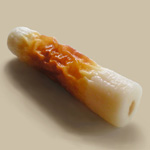
Chikuwa
Waht is Chikuwa (Wikipedia)
‘Chikuwa’ is a Japanese tube-shape fishcake. It is made from Surimi (Fish Paste) seasoned with Salt and Sugar. Egg White is often added. The mixture is wrapped around a bamboo rod (OR metal stick nowadays) and grilled or steamed.
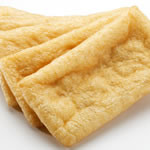
Abura-agé
What is Abura-agé (Wikipedia)
‘Abura-agé’ is the thin deep-fried Tofu, sometimes called ‘Usu-age’. It is produced by cutting tofu into thin slices and deep-frying them. When one side of ‘Abura-agé’ is cut open, it can be used as pouch to stuff or wrap other food. ‘Abura-agé’ is often used to wrap Inari-zushi.
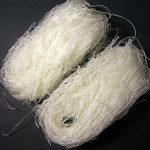
Harusame
What is Harusame? (Wikipedia)
’Harusame’ noodles are a type of transparent noodle usually made from potato starch or mung bean starch. ‘Harusame’ means ‘Spring Rain’ as they look like thin streaks of fine rain in the season. They are commonly used to make salads, or as an ingredient in ‘Nabe’ hot pot dishes. They are also often used to make Japanese adaptations of Chinese and Korean dishes.
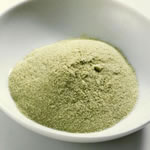
Kombucha
What is Kombucha? (Wikipedia)
For the Japanese, ’Kombucha’ is ‘Kombu-Tea’ which is basically ground Kombu (kelp) powder. Sometimes tea leaves and salt is added. You make the drink by mixing the ‘Kombucha’ powder with hot water. ‘Kombucha’ tastes more like dashi stock. It is totally different from the Kombucha, a tea-like health drink made form fermented mushrooms originated in Siberia.
I don’t drink ‘Kombucha’ but it is a handy seasoning for cooking as it can instantly add ‘Umami’ from kelp to the dish.
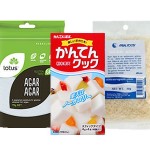
Kanten
What is Kanten? (Wikipedia)
Gelatine & Kanten (Agar Agar) are both gelling agents commonly used to make gelatinous dessert. Gelatine is made from skin, bones and connective tissues of animals. Kanten (Agar Agar) is made from sea plants. Some Agar products contain a substance made from Carob Tree seeds.
See ‘Basic Jelly’ page to find out how much Kanten you need to make jelly.
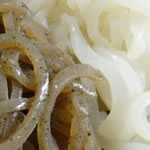
Ito-Konnyaku/Shirataki
What is Shirataki? (Wikipedia)
Ito-Konnyaku or Shirataki is basically same thing as Konnyaku/Konjac made from grated Konnyaku Potatoes but they are noodles. They are very low in calories and good source of dietary fiber. Often used for Nabe dishes but quite versatile as noodles.
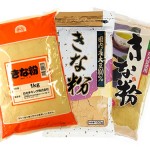
Kinako
What is Kinako? (Wikipedia)
Kinako, also known as ‘Roasted Soybean Flour’, is made by finely grinding roasted soybeans into powder. Kinako is widely used in Japanese cooking, especially for Japanese sweets for coating or topping. Nowadays Kinako is used for a wide variety of foods and drinks because it is considered as a healthy ingredient which contains B vitamins and protein.
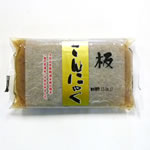
Konnyaku/Konjac
What is Konnyaku? (Wikipedia)
My grandmother used to make Konnyaku at home. She grated Konnyaku Potatoes to make very thick paste, and added liquid which she made with water and vegetal ash, then she made the paste into fist-size balls and boiled them. Freshly cooked Konnyaku can be enjoyed raw as Sashimi Konnyaku with Sumiso Sauce. I loved them.
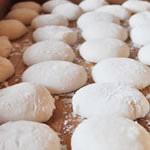
Mochi/Omochi
What is Mochi? (Wikipedia)
Mochi is very popular in Japan. Mochi is basically pounded steamed glutinous rice. It can be both savoury & sweet. There are so many varieties of flavours, shapes and cooking methods. Many Asian countries also have very similar food. Mochi can be very sticky and gooey and elastic when soft, especially when cooked or heated, sometimes people get choked on it. You should eat it carefully!
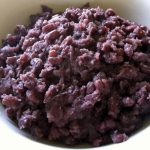
An/Anko (Tsubu-an & Koshi-an)
What is An? (Wikipedia)
In English we call it ‘Sweet Bean Paste’ but ‘An’ can be made of Pumpkin, Sweet Potato, Sesame Seeds, Chestnuts, Walnuts and Fruit. However, when we say ‘Anko’ that means most definitely Azuki (Red Bean) Paste, which is a very popular ingredient for Japanese sweets. Azuki (Red beans) are available from most food stores and ‘Anko’ is absolutely easy to make.
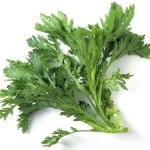
Shungiku (Edible Chrysanthemum)
What is Shungiku? (Wikipedia)
There are many difdfreent names for this vegetable. The leaves are used along with stems to flavor soup and stir-fry. In Japan, it is often used in Nabe, Soup and Aemono Salad. Shungiku has strong flavour which I didn’t like when I was young but I love now. It is very easy to grow in kitchen garden and commonly available from Asian grocery stores.
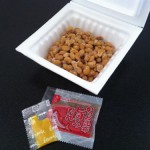
Nattō
What is Nattō? (Wikipedia)
Nattō is basically fermented soy beans. Naturally Nattō is very nutritious. Many people eat it with hot steamy white rice for breakfast. I love it with finely chopped fresh spring onions. One downside is its powerful smell.
Many years ago I home stayed at an Aussie family. One day I was preparing Nattō Spaghetti in the kitchen. My host mother came in and suddenly yelled, ‘What’s that?!? Smells like dirty socks!!!’ I agree it smells bad… and it is sticky, gluey and slimly. But I love Nattō whatever people say about it.
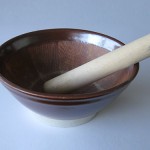
Suribachi
What is Suribachi? (Wikipedia)
‘Suribachi’ is a Japanese mortar. My suribachi is a small one, about 10cm in diameter. This is one of the essentials in my kitchen, and I use it mainly for grinding sesame seeds and mashing Tofu. Hardwood pestles called ‘Surikogi’ are used with Suribachi.
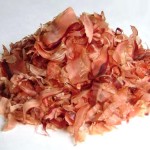
Katsuobushi
What is Katsuobushi? (Wikipedia)
We often refer to it as Bonito Flakes. ‘Bonito’ is a name for a type of tuna fish. Its fillets are boiled, dried, smoked, then fermented using the assistance of mold. Katsuobushi is the main ingredient for Dashi Stock. It is used for Onigiri (Rice Ball) filling and seasoning. It is also called ‘Okaka’.
